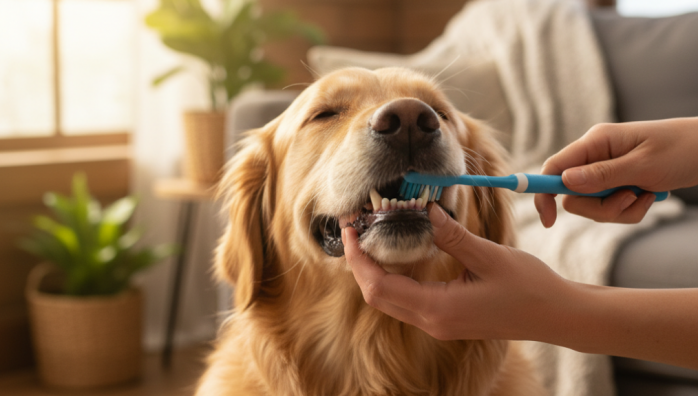Daily Tooth Brushing Techniques for Dogs
by admin in Pet Care Basics 20 - Last Update November 25, 2025

I\'ll be honest, the first time my vet mentioned my dog\'s tartar buildup, I felt a wave of guilt. I was doing everything else right—the walks, the good food, the cuddles—but dental care felt like this huge, intimidating mountain I couldn\'t climb. My dog hated me even looking at his mouth, let alone coming at him with a brush. It took a lot of patience, and a bit of trial and error, but I finally developed a daily routine that works for both of us, and it\'s much less stressful than I ever imagined.
Getting the right tools for the job
Before you even think about brushing, setting yourself up for success is key. I learned the hard way that just grabbing any old brush won\'t work. You need a dedicated kit that makes the experience comfortable for your dog.
Choosing the right toothbrush
I started with one of those finger brushes. It was great for getting my dog used to the sensation of something in his mouth. It felt less invasive to him, and it gave me more control. After a few weeks, I graduated to a dual-headed toothbrush designed specifically for dogs. The angled heads make it so much easier to reach those back molars where plaque loves to hide.
Finding a toothpaste they\'ll love
This was the real game-changer. Never, ever use human toothpaste on your dog; it contains ingredients like xylitol that are toxic to them. I tried a couple of different enzymatic dog toothpastes. The poultry flavor was an instant hit with my pup. He started seeing the toothpaste as a treat, which completely changed his attitude towards our brushing sessions.
My step-by-step daily brushing routine
Consistency is more important than perfection. My goal is a quick, positive session every single day, rather than a long, stressful battle once a week. This is the gentle process that I found works best.
- Create a calm space: I always do this in the evening when we\'re both relaxed, sitting on the floor in the living room. No hype, no stress.
- Start with touch: For the first few days, I just gently handled his muzzle and lifted his lips, rewarding him with praise. No brush involved.
- Introduce the toothpaste: I\'d put a tiny dab of the flavored toothpaste on my finger and let him lick it off. This builds that positive association.
- The first brush: Once he was comfortable with the first two steps, I put a little toothpaste on the finger brush and just gently rubbed one or two of his front teeth. Then I\'d stop and give him lots of praise. The key was to end on a positive note before he got anxious.
- Build up to a full brush: Over a week or two, I gradually increased the number of teeth I brushed each session. Now, I can do a quick, gentle brush of all his outer teeth surfaces in under a minute. I focus on the outside, as that\'s where most tartar accumulates.
A few final thoughts from my experience
Don\'t get discouraged if your dog resists at first. It\'s a new and strange experience for them. Keep the sessions short, positive, and full of rewards. That little bit of daily effort has made a huge difference in my dog\'s breath and overall oral health. Of course, this routine is a supplement to, not a replacement for, professional vet cleanings. I always recommend chatting with your vet to create the best dental care plan for your specific dog\'s needs.














